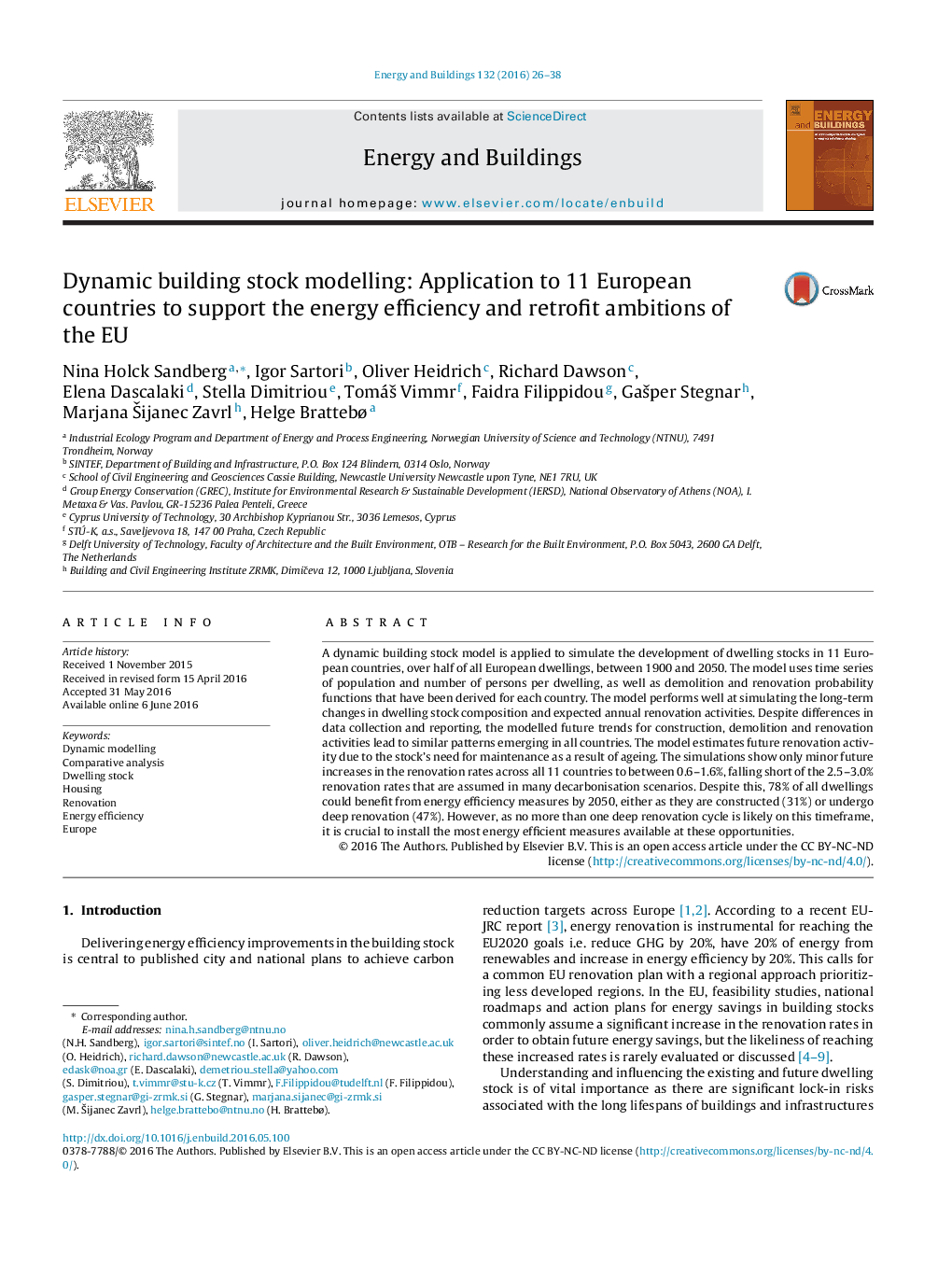| Article ID | Journal | Published Year | Pages | File Type |
|---|---|---|---|---|
| 4919651 | Energy and Buildings | 2016 | 13 Pages |
â¢A dynamic dwelling stock model is applied to 11 European countries.â¢The model performs well for all countries.â¢Similar patterns emerge for future construction, demolition and renovation rates.â¢Future renovation rate below that required to meet decarbonisation targets.â¢The model forms a solid basis for detailed analyses of EU energy saving potential.
A dynamic building stock model is applied to simulate the development of dwelling stocks in 11 European countries, over half of all European dwellings, between 1900 and 2050. The model uses time series of population and number of persons per dwelling, as well as demolition and renovation probability functions that have been derived for each country. The model performs well at simulating the long-term changes in dwelling stock composition and expected annual renovation activities. Despite differences in data collection and reporting, the modelled future trends for construction, demolition and renovation activities lead to similar patterns emerging in all countries. The model estimates future renovation activity due to the stock's need for maintenance as a result of ageing. The simulations show only minor future increases in the renovation rates across all 11 countries to between 0.6-1.6%, falling short of the 2.5-3.0% renovation rates that are assumed in many decarbonisation scenarios. Despite this, 78% of all dwellings could benefit from energy efficiency measures by 2050, either as they are constructed (31%) or undergo deep renovation (47%). However, as no more than one deep renovation cycle is likely on this timeframe, it is crucial to install the most energy efficient measures available at these opportunities.
Graphical abstractDownload full-size image
